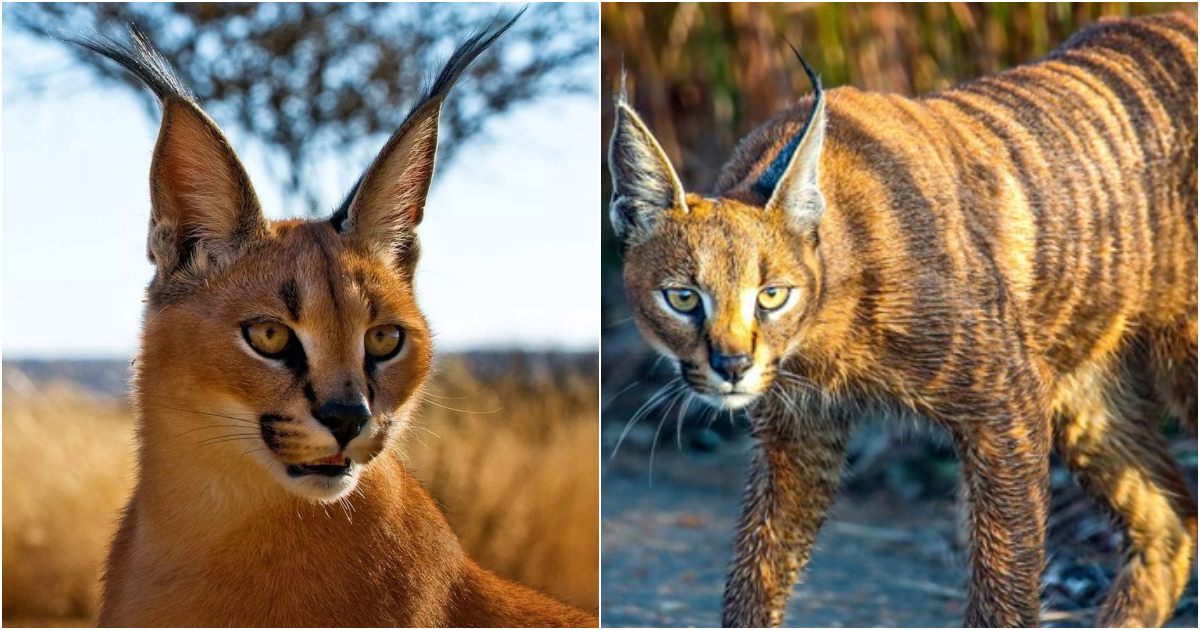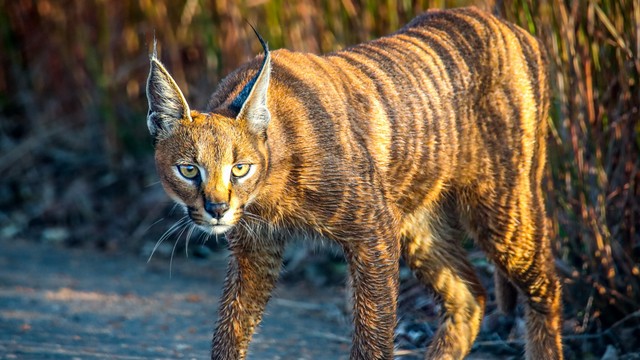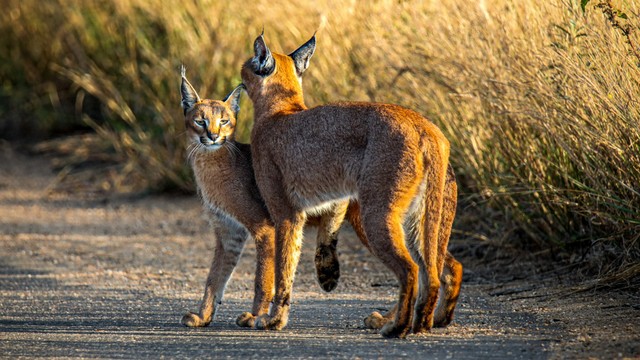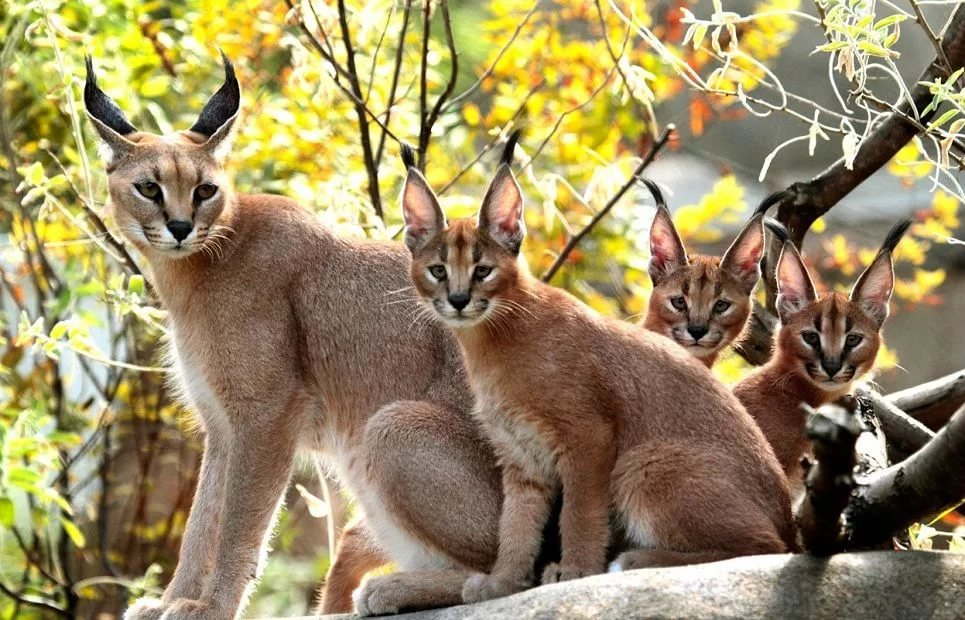Clever Parenting Lesson of the Caracal Cat

In the Kruger National Park, South Africa, one of the rarest cat species collaborated to guide and hunt in front of the photographer’s lens.
The Caracal, also known as the African Lynx, African Caracal, or Desert Lynx, is a medium-sized wild cat native to Africa, the Middle East, Central Asia, and India. Its specific origin is yet to be scientifically established, but it is believed to have a close relationship with the African Golden Cat (Caracal Aurata) and the Serval, dating back over 5 million years.

Originally, the Caracal was a wild cat species found in nature. It was associated with ancient Egyptian culture and was revered by humans, even being domesticated as a pet. The Caracal was even mummified and buried alongside Pharaohs. Numerous paintings and sculptures of this cat species have been found in ancient tombs by archaeologists.
When discussing the origin of this cat breed, Turkey is often mentioned. It is believed to be the place where the Caracal cat was first discovered, and it is where the name originated. The international name for this species is “caracal,” derived from the Turkish term “karakulak,” meaning “black ear,” from the 19th century.
The Caracal is often mistaken for the Eurasian Lynx, but it has smooth fur without black spots like the latter.
Apart from their sleek and slender physique, the face of the Caracal is particularly captivating. Their stern face with angular features and large round eyes resembling hazelnuts, accentuated by elongated sharp corners, is the first alluring trait they display. Caracals possess a straight black nose with a round tip, alongside a square-shaped mouth and strong, pointed jaws.
The most distinctive feature of the Caracal is its ears. This animal has long, erect ears situated on either side of its head, crowned with small black tufts. These tufts are usually not very long, measuring only 3 to 4 cm. It is one of the identifying characteristics of this cat breed, earning it the nickname “black-eared lynx.”
Caracals are solitary creatures and do not typically live in packs like the Eurasian Lynx. They are primarily nocturnal and some individuals form pairs. They tend to interact only between a mother and her cubs or during the mating and breeding process.
Recently, an intriguing interaction between a Caracal mother and her cub in Kruger National Park was captured by photographer Hanno Erasmus.
According to Erasmus, it was just an ordinary day when he was strolling near Sonop Dam in the park. As he approached the water, he sensed the movement of a mammal in the tall grass. To his astonishment, a Caracal was stealthily lurking behind the high vegetation. Mesmerized by the animal in front of him, Erasmus carefully followed it, trying not to be noticed. Suddenly, the cat pounced forward in a flash and disappeared from sight. To Erasmus’ surprise, the Caracal had successfully caught a mouse.
From a distance, a smaller Caracal was seen approaching. It could be affirmed that the mother Caracal was hunting the mouse to bring food for her cub. Afterward, both Caracals walked side by side on the path. A scene of breathtaking beauty unfolded in the wild animal kingdom.







